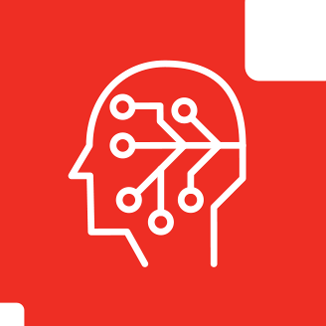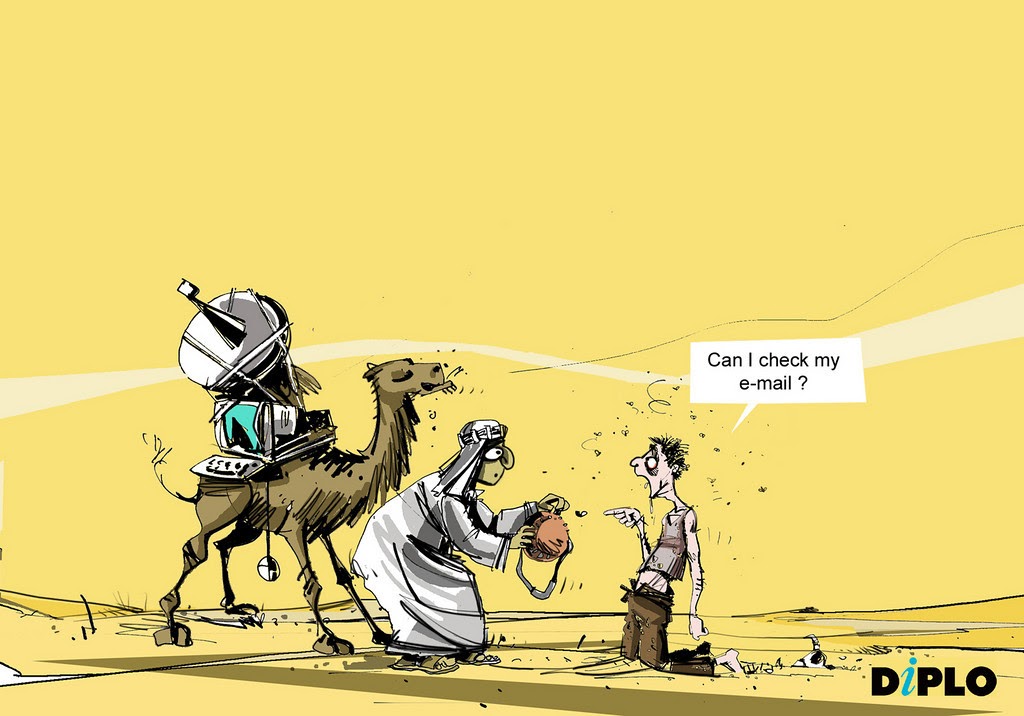About SDC DW Newsletter
Newsletter description: This issue concentrates on the interplay between digitalisation and development and provides recent developments relevant for this nexus in fields such as migration, digital health, water management and inequalities.

What phase of digitalisation are we in now and how has the discourse on development and digital evolved since 1990s?

What should be our focus in getting the nexus right?
 What phase of digitalisation are we in now and how has the discourse on development and digital evolved since 1990s?
What phase of digitalisation are we in now and how has the discourse on development and digital evolved since 1990s?
 What should be our focus in getting the nexus right?
What should be our focus in getting the nexus right?
Revisiting digitalisation and development
Development and technology have been the twins driving progress for centuries. Often, the advancement of technology has led to greater overall societal development. The track record of tech-driven progress is impressive in many aspects; from improving our well-being to countless innovations and economic growth.
For decades, technical assistance has been a synonym for development assistance. Against this background, digital technology has been welcomed as a new tool for progress and development with much enthusiasm.
However, technology has also had many negative consequences: it increased digital divides between countries, regions, and genders; created inequalities; and tore apart the social and cultural fabric worldwide due to hate speech and misinformation.
Today, we should take a step back, reflect and prepare for the future acceleration of tech developments. This issue of the SDC Digital Watch Newsletter aims to contribute to this discussion by presenting the evolution of digitalisation for development over the last 3 decades, and by posing five key questions for the development community to address in 2022 and beyond.

SDC Digital Watch Newsletter is prepared 4 times a year by DiploFoundation. It harnesses insights from comprehensive research, training and analysis on digitalisation and society conducted by Diplo and the Geneva Internet Platform (GIP).
Consult additional resources on training opportunities, research on digitalisation and AI, International Geneva, and many other topics. If you need more information on Diplo and the GIP or if you have suggestions for topics coverage by SDC Digital Watch Newsletter let us know at diplo[@]diplomacy.edu.
Evolution of digitalisation and development nexus
| 1990s Hardware |
During the hardware phase the main goal was to provide computers to developing countries. The prevailing and simplistic approach was that more computers would automatically mean more development. Although this techno-centric approach was corrected later on, its influence remains today. By the end of the decade, the internet started spreading to academic and tech communities in developing countries – paving the way for the next phase in digital development. |
| 2000s Internet | During the Internet phase connectivity was put in the spotlight with its two main aspects: technical access and affordability. Technical access to international networks was facilitated mainly via submarine cables which started being deployed especially around the African continent. As submarine cables increased in number and capacity, the main challenge was bringing access to rural and remote communities – the so-called ‘last mile connectivity’. The cabling of all countries, especially with fibre-optics, saw high costs in continents with large territories and long distances, such as Africa. Mobile phones improved access for remote and rural areas. Yet, access costs are still a problem today.
On the international level, the World Summit on the Information Society (WSIS) introduced the use of digital technologies in society via e-education, e-trade, e-health, e-government in 2003-2005, paving the way for the digitalisation phase. |
| 2010s Digitalisation | During the digitalisation phase technology started becoming mainstream in core development activities; from poverty reduction to economic growth and capacity development. Critical voices started emerging as an answer to the predominant techno-optimistic view on the development of the time. In 2016, the World Bank published a landmark report on Digital Dividends arguing that, in spite of its strong potential, digital technology failed to reduce inequalities, improve democracy, and increase productivity.
The report argued that digitalisation’s benefits haven’t been spreading evenly and rapidly enough to allow true global economic growth. Digital dividends have widened particularly with the fast growth of tech platforms and AI in the developed world. China became the key provider of digital and networking technologies in Africa. Homegrown digital finance services such as MPesa started emerging in developing countries. |
Digital Milestones

5 main questions for digitalisation and development in 2022
1. Should development support focus on affordable access for the ‘next billion’ or the ‘bottom’ billion? It is estimated that ⅓ of the world population (2.7 billion) is not connected as of early 2021. The next billion are easier to connect, as they are likely to be closer to networks and have basic digital literacy skills compared to the bottom billion who will certainly sink further down the poverty line without digital inclusion.
This choice between supporting the ‘next’ or the ‘bottom’ billion of global citizens will have far-reaching consequences on poverty reduction and realisation of the sustainable development goals (SDGs), especially SDG 1 on poverty reduction.
Survey of the population without digital access
| Continents | % population | in million people |
| Asia | 36.2 | 1565 |
| Europe | 11.8 | 98 |
| Africa | 56.8 | 7794 |
| Latin America / Carib. | 24.4 | 1613 |
| North America | 6.1 | 22 |
| Middle East | 25.1 | 66 |
| Oceania / Australia | 30.1 | 13 |
Source: Internet World Stats
2. How to evolve digitalisation from a ‘shy’ aspect of Agenda 2030 to the cross-cutting and invisible ‘18th SDG’? As illustrated in this SDG/digital mapping, meeting the 2030 SDGs increasingly depends on how digital technology is being deployed. Digitalisation and Agenda 2030 must progress at different speeds.
Some SDGs are ‘more digital’ than others, such as SDG 4 (Quality Education) and SDG 3 (Good Health and Well-being) which have a correlation of 73% and 71% with digital technology according to a study by Huawei and GeSI. However, the COVID-19 pandemic has increased dependence on digital networks across all SDGs. In 2022, the development communities must sync this changing reality with their plans, projects, and priorities.
3. How to make ‘a rising tide lifts all boats’ approach to digitalisation more harmonised? While it is certain that digital technology has improved the conditions of many, it is also certain that some boats have raised much faster. Thus, digitalisation has become one of the main engines of inequalities (SDG 10) from local to global level.
As an illustration, the market capitalisation of Apple (3 trillion USD) is higher than the total GDP of African continents (in the range of 2.6 trillion USD). See more comparisons (open on a private device due to firewall). Ensuring that the benefits of digital technologies are more widely spread remains a challenge for 2022 and beyond.
4. How to prevent the widening of digital gaps with advancements in AI, big data, quantum computing, and other frontier technologies? Many developing countries do not have the technical, economic, institutional, and human capacities to keep up with the latest developments. As frontier technologies are much more demanding in terms of hardware, processing power, and expertise, it is likely that the gap between developed and developing countries will become wider than with web technologies.
5. How to minimise the negative impact on development assistance of the emerging ‘digital cold war’ between the USA and China? As tensions between the two digital powers accelerate, developing countries will face increasingly complex situations of having to choose between competing technologies, standards, and approaches provided by the two countries.
The first glimpse of this tension was the Trump administration’s request for developing countries not to use Huawei technologies for their 5G networks. In the context of these geopolitical tensions, multilateral solutions for cybersecurity, standards, and digital governance will become even more important for small and developing countries.
Updates on Digitalisation and Development
Migration: Gathering, managing and protecting data got in the focus. UNHCR and the World Bank established the Joint Data Center on Forced Displacement (JDC). The JDC Strategy for 2021-2023 describes how the Center prioritises its engagements to improve the protection and well-being of populations affected by forced displacement through better data and evidence. A growing concern is about mismanagement of data including alleged cases from Canada, Australia, UK and UNHCR.
Digital health: More calls for digital health inclusion; discussions advance on implementing the WHO’s Global Strategy on Digital Health; as innovation in digital tech continues, authorities pay more attention to regulatory issues; the GIP hosted a debate on health and AI.
Water management: Governmental funds allocated to water technology research; IGOs partner with tech companies to leverage water technology solutions.
Environment: The Policy Network on Environment of the Internet Governance Forum published a study on digitalisation and the environment. The environment has been one of the main tracks of the Internet Governance Forum, held in December. The Geneva Internet Platform organised a debate on digitalisation powering environmental protection.
Inequalities: recurring acknowledgements that digital inequalities – widened by the pandemic – persist across geography, income, and gender; statistics show a connectivity ‘grand canyon’: 96% of the 2.9 billion people still offline live in the developing world; digital inequalities also among critical short- and medium-term threats to the world.
An interplay between technology and development was in the focus of the debate hosted by the GIP on 15 December 2021. Diplomats and tech experts addressed the following questions: digital innovation, data management, algorithms for healthcare, education, logistics for urban development, climate change, women’s empowerment, digital divide and risks of widening social inequalities.
You can follow this debate as well as other relevant resources on technology and development at the GIP Digital Watch.
Digitalisation of Multilateralism
Digital technology impacts multilateralism in two ways. First, it brings new issues on the multilateral agenda. For example, data and fake news impact health, humanitarian, migration and data discussions. Second, digital technology introduces new tools for multilateral diplomacy such as e-participation, data analysis, and AI. You can subscribe for updates at multilateral@diplomacy.edu



